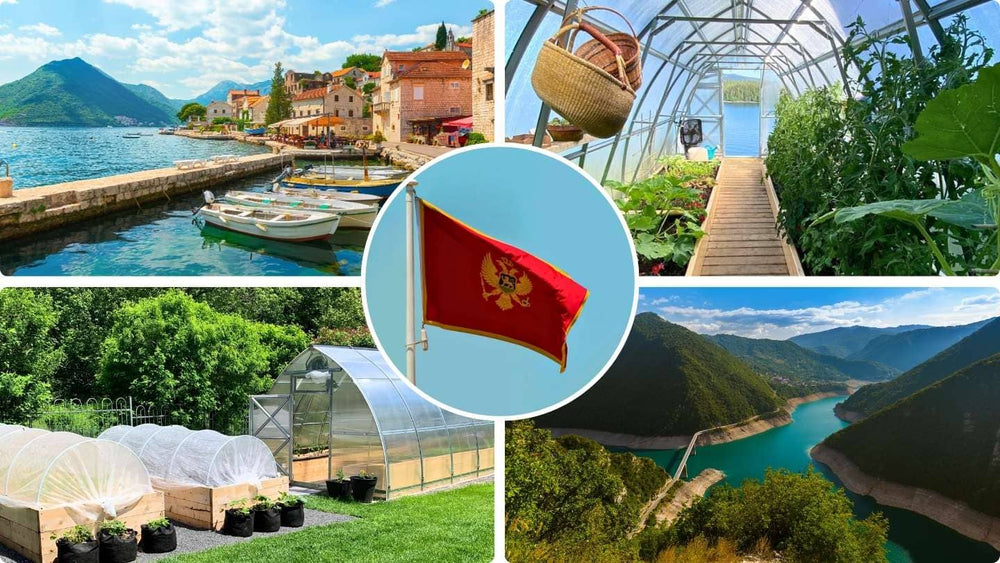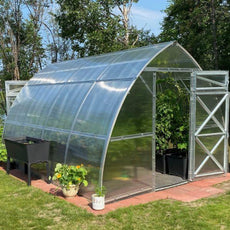In this article, you will learn:
- Characteristics of Montenegro’s Growing Regions
- Challenges of Gardening in Montenegro
- The Benefits of Using a Greenhouse in Montenegro
Montenegro experiences a Mediterranean climate along its coastline, with mild winters and hot summers, while its mountainous interior sees alpine conditions.
Summer temperatures typically range from 25°C to 35°C, and winter temperatures vary from 10°C in southern coastal areas to below freezing in the northern highlands. Understanding Montenegro’s microclimates is essential for successful gardening and agriculture.

Image from Plant Maps
Characteristics of Montenegro’s Growing Regions
Montenegro’s diverse climate greatly impacts its agricultural practices:
- Mediterranean climate with hot, dry summers and mild, wet winters in coastal areas.
- Continental climate with cold, snowy winters in mountainous regions.
- Summer temperatures often reach 30-35°C.
- Winter temperatures range from -10°C in the north to 10°C along the coast.
- Prolonged dry spells from May to September.
- Strong Bora winds along the Adriatic coast in winter and spring.
- Uneven rainfall distribution, with the coastal regions receiving more precipitation.
These climatic factors create distinct growing challenges, especially during the summer drought and the cold alpine winters. The growing season in Montenegro spans 8-10 months in coastal regions and 5-7 months in the highlands, depending on elevation and proximity to the sea.
Challenges of Growing in Montenegro
Summer Drought
Montenegro experiences prolonged dry periods from late spring to early autumn, particularly in coastal and lower-lying regions. This makes water management and irrigation critical challenges.
Strong Winds
The Bora winds are prominent along Montenegro’s Adriatic coastline and valleys, causing potential plant damage and increasing moisture loss.
Temperature Variability
The temperature contrast between the warm Mediterranean coast and colder mountainous regions is a key feature of Montenegro’s climate. This requires careful crop planning and adaptation strategies for urban gardeners.

The Benefits of Using a Greenhouse in Montenegro
Utilizing a greenhouse in Montenegro mitigates harsh weather conditions and allows for year-round cultivation, especially in challenging microclimates.
Extend Your Growing Season
- Without a greenhouse:
The outdoor growing season in Montenegro’s coastal regions is typically March to November, while in mountain regions, it’s May to September.
- With a greenhouse:
Greenhouses in Montenegro facilitate year-round cultivation, which is particularly advantageous for winter vegetables and early spring planting.
Grow a Wider Variety of Vegetables
- Without a greenhouse:
Greek gardeners typically focus on traditional Mediterranean crops such as:
|
Olives Pomegranates Thyme Figs |
Citrus Grapes Hardy vegetables |
- With a Greenhouse:
A greenhouse in Montenegro will allow for the cultivation of diverse crops throughout the year:
|
Early season melons Winter strawberries Asian greens Microgreens Specialty peppers Out-of-season vegetables |
Cold vegetables Delicate salad greens Cherry tomatoes year-round Exotic tropical fruits Temperature-sensitive herbs Tender fruit tree seedlings |





